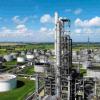Dear All,
We have been tasked with designing a facility to produce hydrogen from natural gas. I have attached a project brief for your perusal.
We are a week away from starting the project, so are looking to simply get an idea of the potential mature technologies that could be used for the facility with respect to the project brief.
Initial searches have provided the following, with their respective advantages and disadvantages:
Three primary techniques are used to produce hydrogen from a hydrocarbon source, such as methane. The techniques are: steam reforming, autothermal reforming, and partial oxidation. Each of these techniques has advantages and disadvantages which must be considered in choosing a final design.
Steam reforming
Advantages: industrially mature, no oxygen needed, lowest process operation temperature
Disadvantage: large volume of air emissions
Autothermal reforming
Advantage: low methane slip
Disadvantages: requires air/oxygen, little commercial experience
Partial oxidation
Advantages: no catalyst needed, needs less desulfurization, low methane slip
Disadvantages: high process temperatures, process has high a degree of complexity, poor hydrogen to carbon monoxide ratio
We need to produce three concept designs for the facility. Then we will analyse and evaluate them via a safety analysis, environmental assessment and economics analysis to determine the one taken forward to the detailed design stage.
Are these most likely to be the three concepts? Or are there others that may work? Perhaps some reasons the above wouldn't be even considered in your view?
It is also my understanding that different methods of steam reforming are counted as different concepts, so if that was an option I would value your view on what options would be available.
Regards,
CEEXPD

 FB
FB










.png)







